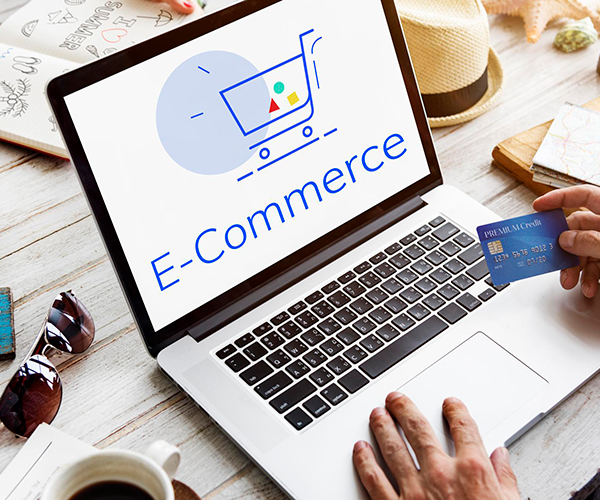Ecommerce Website Development Complete Guide (2025)

Strong 8k brings an ultra-HD IPTV experience to your living room and your pocket.
If you're thinking about launching your own online store in 2025, you're not alone. Ecommerce is booming, and it's not slowing down anytime soon. But building a full-fledged ecommerce website is not just about picking a template and putting up some products.
There’s a lot that goes behind it — design, development, user experience, payment integration, security, SEO, and more. But don’t worry, in this guide we’ll walk you through the process step-by-step, in plain language.
Whether you're a business owner, freelancer, or just curious about how online stores work, this guide is for you.
Step 1: Understand What You’re Building
Before you jump into designing your online store, you gotta be clear about your goals.
• Are you selling physical products, digital products, or services?
• Do you want a small local store or a global ecommerce brand?
• Will you manage inventory yourself or use drop shipping?
Having this clarity helps you decide what kind of features you’ll need — like cart system, payment gateway, shipping integrations, etc.
Also think about your audience. What kind of people will buy your stuff? Knowing your customers helps shape the design and flow of your site.
Step 2: Choose the Right Platform
There are plenty of platforms to build an ecommerce site on in 2025. The “right” one depends on your budget, skills, and long-term goals.
Here are a few popular choices:
- Shopify – Great for beginners. Drag and drop interface. Monthly cost applies.
- WooCommerce – Built on WordPress. Flexible but needs more setup.
- Magento – For larger businesses. Powerful, but complex.
- Custom Development – When you want full control and scalability.
If you're not sure what’s best for you, it’s worth consulting with a web development company. They can help you pick what suits your needs — and your budget.
Step 3: Design Matters (A Lot)
A good ecommerce website needs to look good and work smoothly.
Design isn’t just about colors and fonts — it’s about how easy your site is to use. Your customers should find products easily, get info fast, and not get confused halfway.
Here’s what to focus on:
- Clean layout with clear menus
- Mobile-friendly design
- Easy navigation (search, filters, categories)
- High-quality product images
- Consistent fonts and branding
Even if you’re doing it yourself, try to keep the design clean and uncluttered. If you hire a web design company, make sure they understand ecommerce flow — not just looks.
Step 4: Build the Core Features
This is where the development part starts to get a bit more technical. But these are the main features every ecommerce site needs:
1. Product Pages – With images, description, price, and options (size, color, etc.).
2. Shopping Cart – Where users can add items and see totals.
3. Checkout System – Should be simple and secure.
4. Payment Gateway – For accepting payments (PayPal, Stripe, Razorpay, etc.).
5. User Accounts – Let users save orders, track shipping, etc.
6. Admin Panel – For you to manage products, orders, customers.
Don’t overload your site with unnecessary features. Start with the basics. You can always scale later.
Step 5: Think About Security
Ecommerce sites deal with sensitive info — credit card numbers, personal data, etc. So security is not optional. It’s a must.
• Always use HTTPS (SSL certificate).
• Use strong admin passwords.
• Regularly update your platform and plugins.
• Don’t store card details yourself — leave that to secure payment gateways.
Your customers need to trust your website. If your site looks shady or breaks easily, people won’t buy.
Step 6: Logistics, Shipping & Inventory
If you're selling physical products, you’ll have to figure out how they’re going to be delivered.
Some questions to think about:
• Will you offer free shipping?
• Are you delivering nationally or globally?
• Are you managing stock manually or using software?
You can integrate tools like Shiprocket, Delhivery, or other shipping APIs to make this smooth. If you're using a platform like Shopify, some of this is already built in.
Step 7: SEO & Marketing Setup
You can build the best ecommerce website in the world, but if no one finds it, what’s the point?
Search Engine Optimization (SEO) helps your site show up in Google when people search for stuff you sell. For example, if you’re selling handmade soaps, you’d want to rank for “buy natural soap online” or similar terms.
Here’s how to improve your chances:
• Use keywords in product titles and descriptions
• Write proper meta titles and tags
• Use image alt texts
• Add a blog section for helpful content
• Share products on social media
Tools like Google Analytics and Facebook Pixel are helpful to track visitors and conversions.
Step 8: Test Everything
Before you launch, test your website like you’re a customer.
• Try buying something
• Add and remove products
• Check different devices (mobile, tablet, desktop)
• Make sure payment works
• Try broken scenarios (invalid cards, wrong address, etc.)
A simple bug can cost you real money. Better to catch it before your customer does.
Step 9: Go Live and Keep Improving
Once everything is ready and tested, hit that publish button. Your site is live!
But the work doesn’t stop here. You’ll need to keep improving — fix bugs, track what’s selling, add features, and keep marketing.
Talk to your users, see what they like or don’t like, and adapt accordingly. That’s how great ecommerce brands grow.
Final Thoughts
Building an ecommerce website in 2025 is totally doable — whether you're a solo founder or running a small business. You just need the right mix of planning, tech, and a bit of patience.
You don’t have to do it all alone either. Many business owners team up with a web development company to get the heavy stuff done — while they focus on product and growth.
Remember: start small, stay consistent, and grow step by step.
Note: IndiBlogHub features both user-submitted and editorial content. We do not verify third-party contributions. Read our Disclaimer and Privacy Policyfor details.


